Preface
Contents
Part I Profile
1 Which Contribution Does EDM Provide to Computer-Based Learning Environments?
Abstract
1.1…Introduction
1.2…Educational Data Mining
1.2.1 Definition
1.2.2 Areas in Relation to EDM
1.2.3 Objectives of the EDM
1.2.4 The Used Methods
1.2.5 The Analyzed Data
1.2.6 Process of Applying the EDM
1.2.7 Some Technological Tools Used in EDM
1.3…Examples of EDM Applications in Computer-Based Learning Environments
1.3.1 EDM Applications for Predicting and Evaluating Learning Performance
1.3.2 EDM Applications for Analyzing Learners’ Behaviors
1.3.3 Discussion
1.4…Conclusions
References
2 A Survey on Pre-Processing Educational Data
Abstract
2.1…Introduction
2.2…Types of Educational Environments
2.2.1 Learning Management Systems
2.2.2 Massive Open Online Courses
2.2.3 Intelligent Tutoring Systems
2.2.4 Adaptive and Intelligent Hypermedia Systems
2.2.5 Test and Quiz Systems
2.2.6 Other Types of Educational Systems
2.3…Types of Data
2.3.1 Relational Data
2.3.2 Transactional Data
2.3.3 Temporal, Sequence and Time Series Data
2.3.4 Text Data
2.3.5 Multimedia Data
2.3.6 World Wide Web Data
2.4…Pre-Processing Tasks
2.4.1 Data Gathering
2.4.2 Data Aggregation/Integration
2.4.3 Data Cleaning
2.4.4 User and Session Identification
2.4.5 Attribute/Variable Selection
2.4.6 Data Filtering
2.4.7 Data Transformation
2.5…Pre-Processing Tools
2.5.1 General Purpose Data Pre-Processing Tools
2.5.2 Specific Purpose Data Pre-Processing Tools
2.6…Conclusions
Acknowledgments
References
3 How Educational Data Mining Empowers State Policies to Reform Education: The Mexican Case Study
Abstract
3.1…Introduction
3.2…Domain Study
3.2.1 A Glance at Data Mining
3.2.2 Educational Data Mining in a Nutshell
3.3…Related Works
3.4…Context
3.4.1 The Mexican State
3.4.2 Educational Community
3.4.3 National Assessments
3.4.4 The Constitutional Reform in Education
3.4.5 Community Reaction
3.5…Source Data
3.5.1 EXCALE Databases
3.5.2 Source Data Students’ Opinions
3.5.3 Framework
3.5.4 Exploration Analysis
3.6…Educational Data Mining Approach
3.6.1 Essential Mining
3.6.2 Supplementary Mining
3.7…Discussion
3.7.1 Interpretations of the Basic Findings
3.7.2 Interpretation of Supplementary Mining
3.7.3 A Diagnostic of Students Opinions
3.8…Conclusions
Acknowledgments
References
Part II Student Modeling
4 Modeling Student Performance in Higher Education Using Data Mining
Abstract
4.1…Introduction
4.2…Background
4.2.1 The Decision Tree Classification Model
4.2.2 The Decision Tree Mechanism
4.3…System Overview, Software Interface and Architecture
4.4…Case Study: Modeling Student Performance
4.4.1 Data Description
4.4.2 Data Preparation
4.4.3 Analyzer Model
4.5…Discussion of Results
4.6…Conclusions
References
5 Using Data Mining Techniques to Detect the Personality of Players in an Educational Game
Abstract
5.1…Introduction
5.2…Literature Review
5.2.1 Personality in Computer-Based Learning Environments
5.2.2 Emotion Detection Using Leary’s Rose Frameboard
5.2.3 Automatic Detection of Personality
5.2.4 Personality and Student Behavior
5.2.5 The Relationship Between Personality Traits and Information Competency
5.2.6 Personality Traits and Learning Style in Academic Performance
5.2.7 A Neural Network Model for Human Personality
5.2.8 Relationships Between Academic Motivation and Personality Among the Students
5.2.9 Relation Between Learning from Errors and Personality
5.2.10 Academic Achievement and Big Five Model
5.2.11 The Big Five Personality, Learning Styles, and Academic Achievement
5.2.12 Using Personality and Cognitive Ability to Predict Academic Achievement
5.3…Leary’s Interpersonal Frame Board
5.3.1 Land Science Game
5.3.2 Participants and Data Set Construction
5.4…Annotation Scheme
5.4.1 Human Annotation
5.5…Model
5.5.1 Lexicon Resources
5.5.2 Feature Extraction
5.5.3 The Linguistic Inquiry and Word Count Features
5.5.4 Automated Approaches to Personality Classification
5.5.5 Classification Method
5.6…Experience and Results
5.6.1 Classification Results
5.7…Discussion and Analysis
5.7.1 Personality Trait Tracking Analysis
5.7.2 ANOVA Analysis
5.8…Conclusion and Future Research
Acknowledgments
References
6 Students’ Performance Prediction Using Multi-Channel Decision Fusion
Abstract
6.1…Introduction
6.2…Student Modeling
6.3…Performance Prediction
6.3.1 Performance Prediction in ITS
6.3.2 Data Mining Approaches for Prediction
6.4…Multi-Channel Decision Fusion Performance Prediction
6.4.1 Determining the Performance Level in Assignment Categories
6.4.2 Determining Overall Performance Levels
6.4.3 Mapping from the Performance in Assignment Categories to Overall Performance
6.4.4 The Characteristics of Assignment Categories
6.5…Experimental Results and Discussion
6.6…Conclusion and Future Work
Acknowledgements
References
7 Predicting Student Performance from Combined Data Sources
Abstract
7.1…Introduction
7.2…Defining the Problem
7.2.1 Problem Specification 1
7.2.2 Problem Specification 2
7.2.3 Problem Specification 3
7.2.4 Problem Specification 4
7.3…Sources of Student Data
7.3.1 Student Activity Data from the Virtual Learning Environment
7.3.2 Demographic Data
7.3.3 Past Study
7.3.4 Assessment Data
7.4…Feature Selection and Data-Filtering
7.5…Classifiers for Predicting Student Outcome
7.5.1 Support Vector Machines and Decision Trees
7.5.2 General Unary Hypotheses Automaton
7.5.3 Bayesian Networks and Regression
7.6…Evaluation Framework
7.7…Real-Time Prediction
7.8…Revisiting the Problem Specification in Light of Results
7.8.1 Problem Specification 4 (Revised)
7.8.2 Problem Specification 5
7.8.3 Problem Specification 6
7.9…Developing and Testing Models on Open University Data (A Case Study)
7.10…Beyond OU: Applying Models on Alternative Data Sources
7.11…Conclusions
Acknowledgments
References
8 Predicting Learner Answers Correctness Through Eye Movements with Random Forest
Abstract
8.1…Introduction
8.2…Background
8.2.1 Related Work
8.2.2 Cognitive Processes
8.2.3 Eye Movement Data
8.2.4 Random Forest
8.3…Method
8.3.1 The Purpose of the Study
8.3.2 Design
8.3.3 Pre-Application
8.3.4 Application
8.3.5 Study Group
8.3.6 Data Collection Instruments
8.4…Analyses of Results
8.5…Conclusion and Discussion
8.6…Future Work
A.1. Appendix: Supplementary
A.1.1 Question-1
A.1.2 Question-2
A.1.3 Question-3
A.1.4 Question-4
A.1.5 Question-5
A.1.6 Question-6
A.1.7 Question-7
A.1.8 Question-8
A.1.9 Question-9
References
Part III Assessment
9 Mining Domain Knowledge for Coherence Assessment of Students Proposal Drafts
Abstract
9.1…Introduction
9.2…Background
9.2.1 Global Coherence
9.2.2 Latent Semantic Analysis
9.2.3 Related Work
9.3…Analyzer Model of Global Coherence
9.4…Data Description (Corpus)
9.5…Experiments
9.5.1 Experimental Design
9.5.2 Agreement Evaluation
9.5.3 Across Section Exploration
9.6…Analysis and Discussion of Results
9.6.1 Across Section Exploration
9.7…System Overview
9.7.1 Intelligent Tutoring System
9.7.2 Web Interface
9.8…Conclusions
Acknowledgments
References
10 Adaptive Testing in Programming Courses Based on Educational Data Mining Techniques
Abstract
10.1…Introduction
10.2…Related Work
10.3…Background
10.3.1 Environment
10.3.2 Data Set
10.4…Modeling Programming Knowledge
10.4.1 Programming Knowledge Overview
10.4.2 Modeling Programming Competencies
10.4.3 Modeling Programming Concepts of the C Language
10.5…Estimating Test Difficulty
10.5.1 Estimating Test Item Difficulty
10.5.2 Estimating Student Capacity
10.6…Test Generation Algorithm
10.7…Application and Results
10.8…Conclusion and Future Work
Acknowledgments
References
11 Plan Recognition and Visualization in Exploratory Learning Environments
Abstract
11.1…Introduction
11.2…Related Work
11.2.1 Plan Recognition
11.2.2 Assessment of Students’ Activities
11.3…The Virtual Labs Domain
11.4…Plan Recognition in Virtual Laboratories
11.4.1 Actions, Recipes, and Plans
11.4.2 The Plan Recognition Algorithm
11.4.3 Empirical Methodology
11.4.4 Complete Algorithms
11.5…Visualizing Students’ Activities
11.5.1 Visualization Methods
11.5.2 Empirical Methodology
11.5.3 Results
11.5.4 Discussion
11.6…Conclusion and Future Work
11.7…Experimental Problems
11.8…The Recipe Library for the Dilution Problem
11.8.1 Dilution Problem Recipes
11.8.2 Recipes Explanation
11.9…User Study Questionnaire
References
12 Finding Dependency of Test Items from Students’ Response Data
Abstract
12.1…Introduction
12.2…Related Work
12.3…Mutual Independency Measure
12.3.1 Preliminaries
12.3.2 Mutual Information Measure
12.3.3 Finding the Best Dependency Tree
12.3.4 An Example
12.3.5 Extensions
12.4…Proof-of-Concept Experiments
12.4.1 Data
12.4.2 Results on Synthetic Data Sets
12.4.3 Results on Real Data
12.5…Conclusions and Future Work
Acknowledgment
References
Part IV Trends
13 Mining Texts, Learner Productions and Strategies with ReaderBench
Abstract
13.1…Introduction
13.2…Data and Text Mining for Educational Applications
13.2.1 Predicting Learner Comprehension
13.3…Textual Complexity Assessment for Comprehension Prediction
13.3.1 The Impact of Reading Strategies Extracted from Self-Explanations for Comprehension Assessment
13.4…Cohesion-Based Discourse Analysis: Building the Cohesion Graph
13.5…Topics Extraction
13.6…Cohesion-Based Scoring Mechanism of the Analysis Elements
13.7…Identification Heuristics for Reading Strategies
13.8…Multi-Dimensional Model for Assessing Textual Complexity
13.9…Results
13.10…A Comparison of ReaderBench with Previous Work
13.11…Conclusions
Acknowledgments
References
14 Maximizing the Value of Student Ratings Through Data Mining
Abstract
14.1…Introduction
14.2…Description of the Data Set
14.2.1 The Process for Collecting Evaluations and Presenting Results
14.2.2 Details About the Data Set
14.2.3 Questions and Variables of Interest
14.2.4 Selected Results from the Statistical Analysis
14.3…The Methodology
14.3.1 A High-Level View of the Process
14.3.2 Corpus Word Analysis
14.3.3 Category Selection
14.3.4 The Domain-Specific Lexicon
14.3.5 The Assessment Process
14.3.6 Refining the Lexicon
14.3.7 The Algorithm
14.4…Assessment Results
14.4.1 Qualitative Validity Assessment of Category Scores by Teaching and Learning Specialists
14.4.2 Quantitative Assessment Through the Comparison of Summary Scores with Overall Instructor Performance Ratings
14.4.3 Quantitative Assessment Through the Comparison of Category and Summary Scores for Teaching Award Winners with All Instructors
14.5…Applications of the Methodology
14.5.1 Evaluation of Instruction at the University of Mississippi
14.5.2 Other Educational Applications
14.6…Future Work
Acknowledgments
References
15 Data Mining and Social Network Analysis in the Educational Field: An Application for Non-Expert Users
Abstract
15.1…Introduction
15.2…Background and Related Work
15.2.1 Social Network Analysis
15.2.2 Classification Applied to the Educational Context: Students’ Performance and Dropout
15.2.3 Data Mining Tools for Non-expert Users
15.3…E-Learning Web Miner
15.3.1 Description of E-Learning Web Miner
15.3.2 General View of the E-Learning Web Miner Architecture
15.3.3 New Services Provided
15.3.4 Mode of Working
15.4…Case Study
15.4.1 Courses
15.4.2 Social Network Analysis in E-Learning Courses
15.4.3 Prediction of Students’ Performance and Dropouts
15.5…Conclusions
Acknowledgements
References
16 Collaborative Learning of Students in Online Discussion Forums: A Social Network Analysis Perspective
Abstract
16.1…Introduction
16.2…Background and Related Works
16.2.1 On Collaborative Learning and E-Learning: An Educational Perspective
16.2.2 Social Networks: A Data Mining Perspective
16.2.3 Social Network Analysis of Online Educational Forums: Related Works
16.3…Network Analysis in E-Learning
16.3.1 Students Interaction Network
16.3.2 Term Co-Occurrence Network
16.4…Case Studies
16.4.1 Extracting Networks
16.4.2 Interpreting Students Interaction Network
16.4.3 Interpreting Term Co-Occurrence Network
16.4.4 Objective Evaluation
16.5…Conclusions
References
Author Index
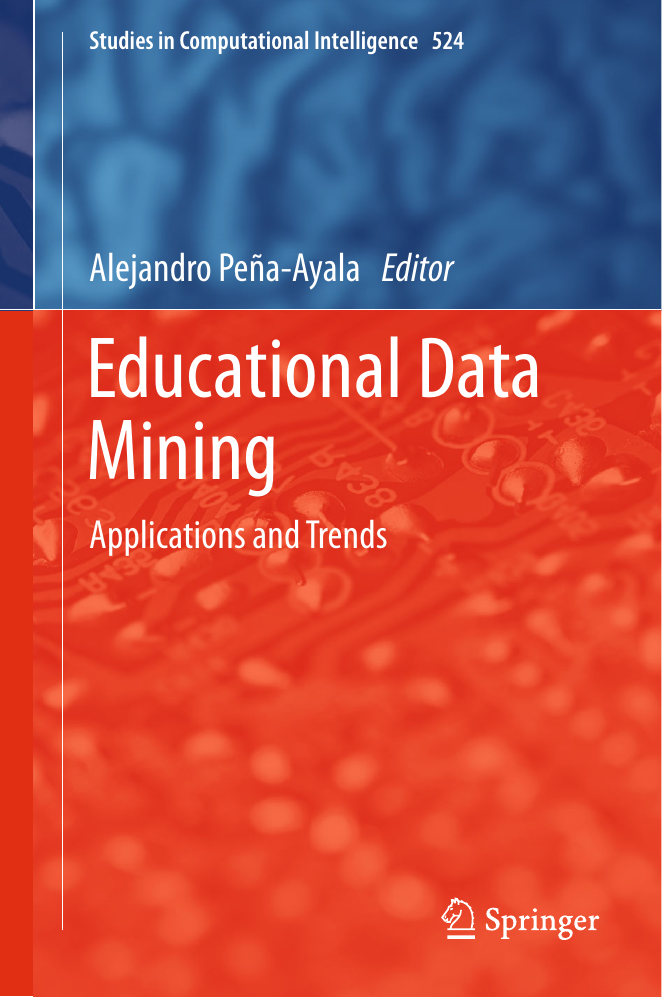
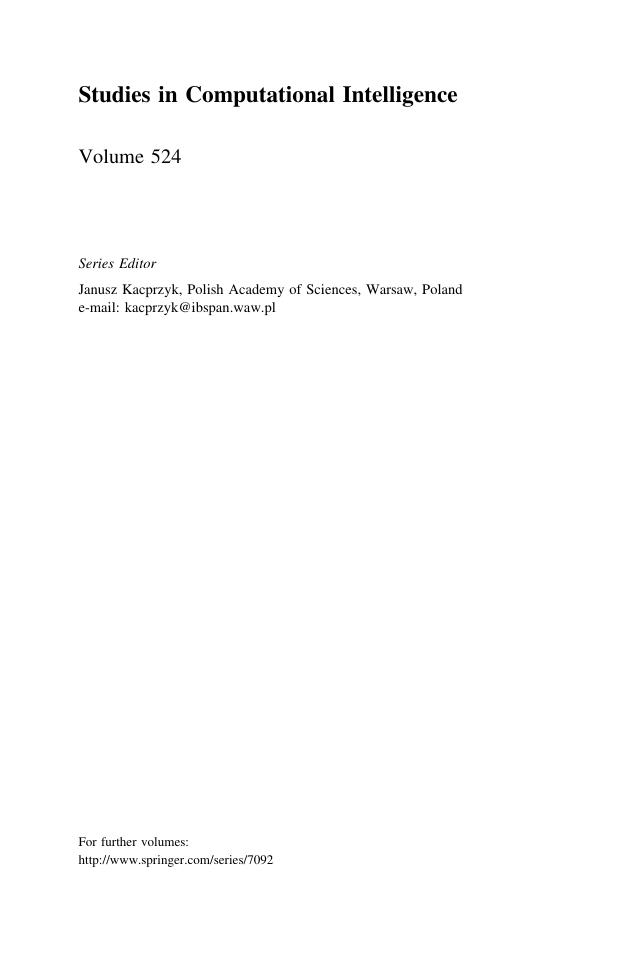
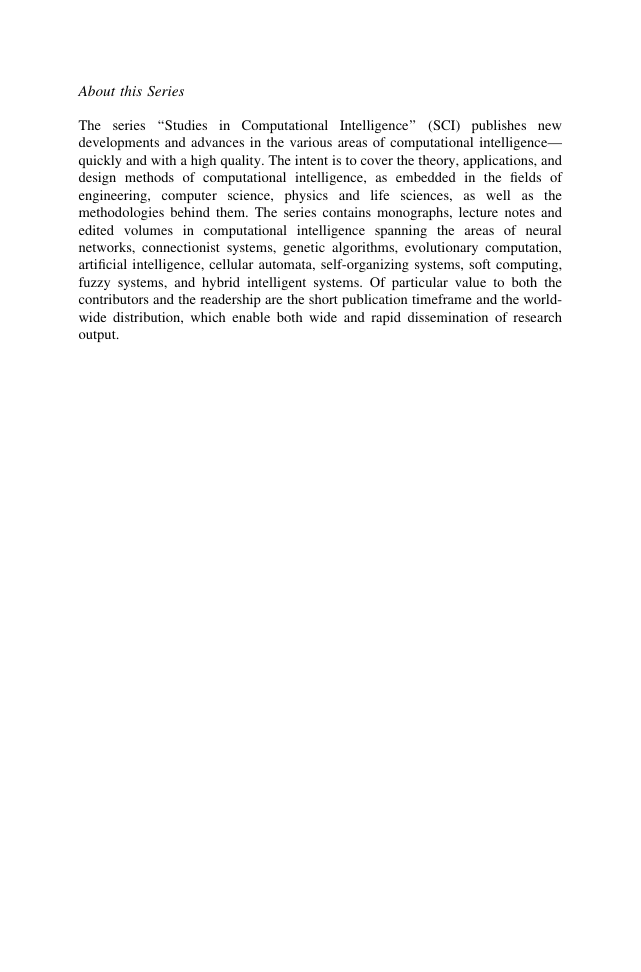
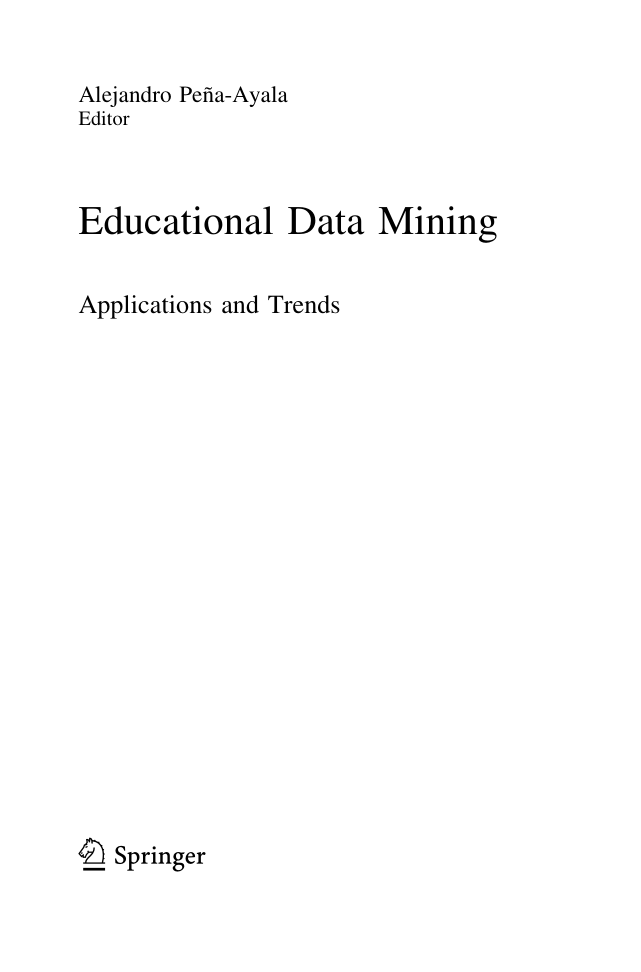
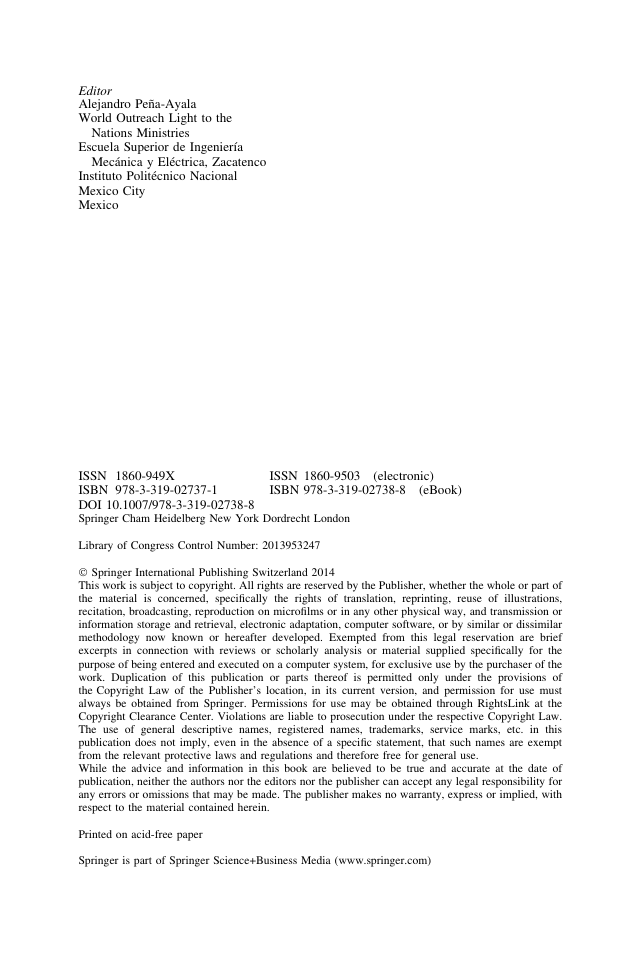
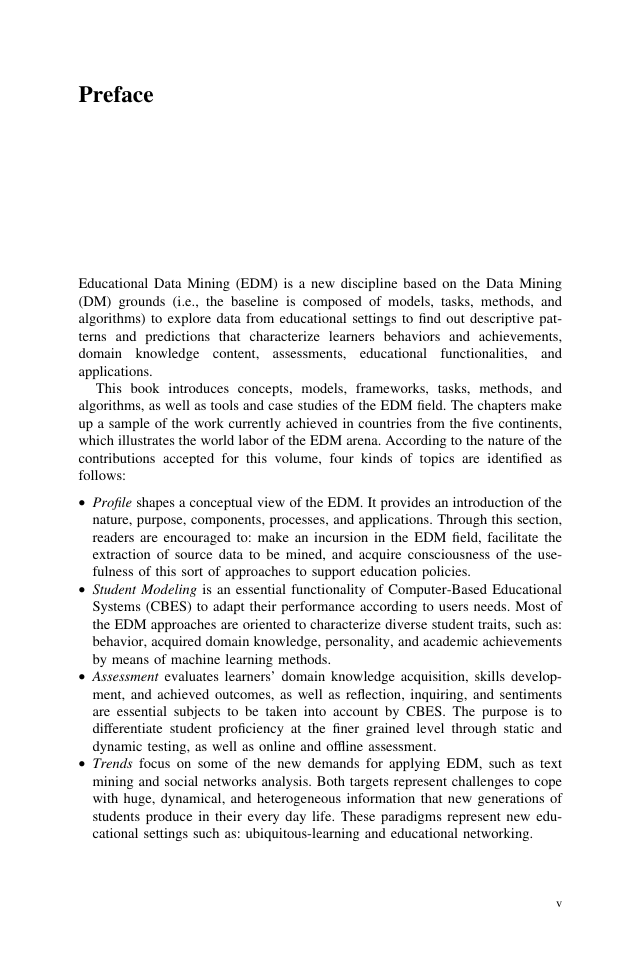
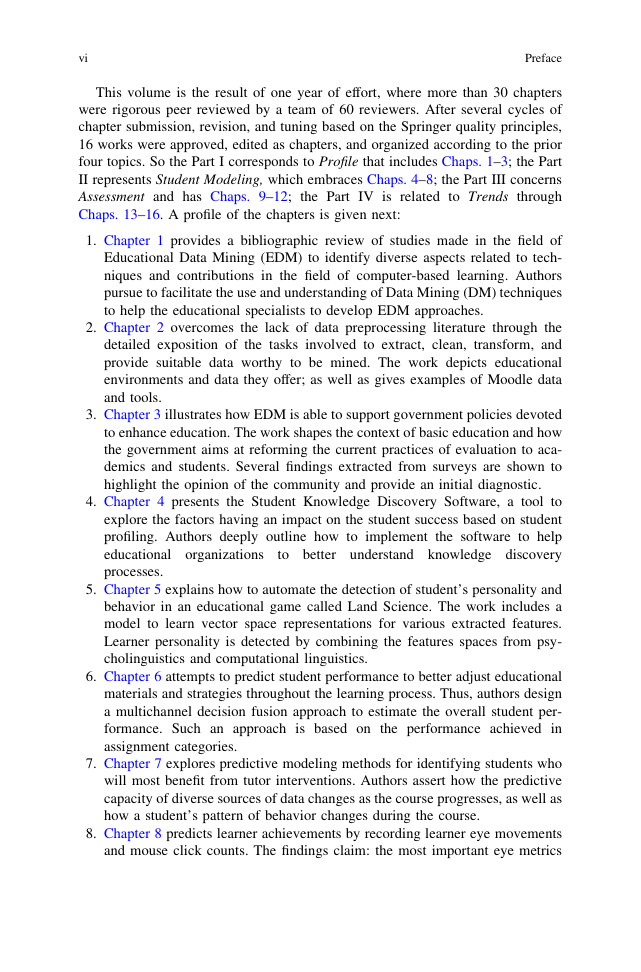
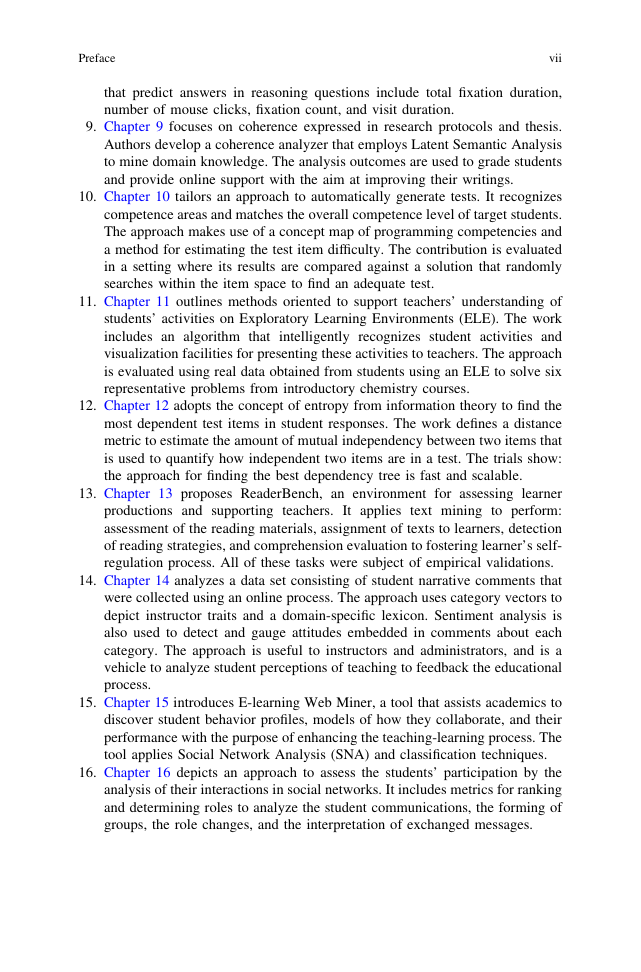








 2023年江西萍乡中考道德与法治真题及答案.doc
2023年江西萍乡中考道德与法治真题及答案.doc 2012年重庆南川中考生物真题及答案.doc
2012年重庆南川中考生物真题及答案.doc 2013年江西师范大学地理学综合及文艺理论基础考研真题.doc
2013年江西师范大学地理学综合及文艺理论基础考研真题.doc 2020年四川甘孜小升初语文真题及答案I卷.doc
2020年四川甘孜小升初语文真题及答案I卷.doc 2020年注册岩土工程师专业基础考试真题及答案.doc
2020年注册岩土工程师专业基础考试真题及答案.doc 2023-2024学年福建省厦门市九年级上学期数学月考试题及答案.doc
2023-2024学年福建省厦门市九年级上学期数学月考试题及答案.doc 2021-2022学年辽宁省沈阳市大东区九年级上学期语文期末试题及答案.doc
2021-2022学年辽宁省沈阳市大东区九年级上学期语文期末试题及答案.doc 2022-2023学年北京东城区初三第一学期物理期末试卷及答案.doc
2022-2023学年北京东城区初三第一学期物理期末试卷及答案.doc 2018上半年江西教师资格初中地理学科知识与教学能力真题及答案.doc
2018上半年江西教师资格初中地理学科知识与教学能力真题及答案.doc 2012年河北国家公务员申论考试真题及答案-省级.doc
2012年河北国家公务员申论考试真题及答案-省级.doc 2020-2021学年江苏省扬州市江都区邵樊片九年级上学期数学第一次质量检测试题及答案.doc
2020-2021学年江苏省扬州市江都区邵樊片九年级上学期数学第一次质量检测试题及答案.doc 2022下半年黑龙江教师资格证中学综合素质真题及答案.doc
2022下半年黑龙江教师资格证中学综合素质真题及答案.doc